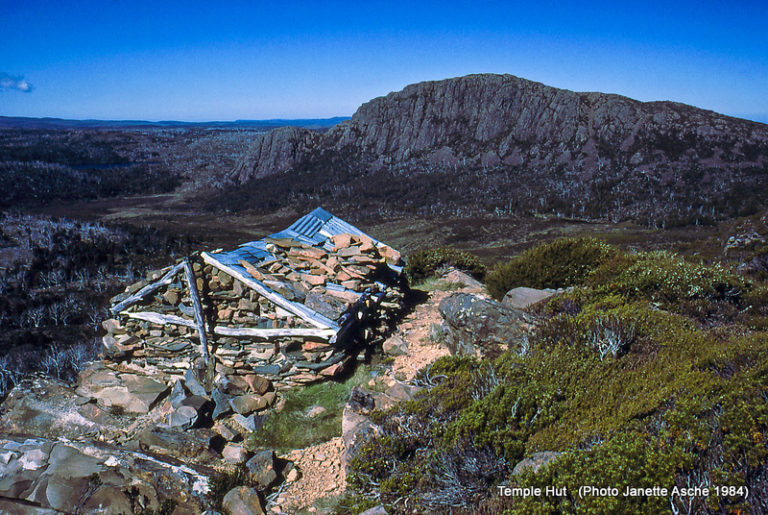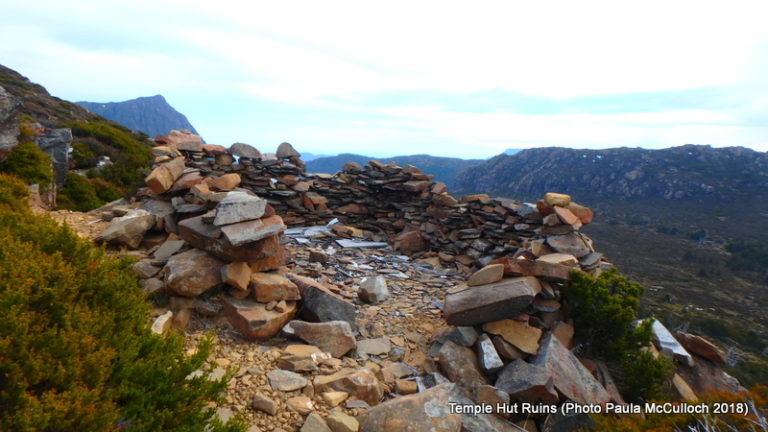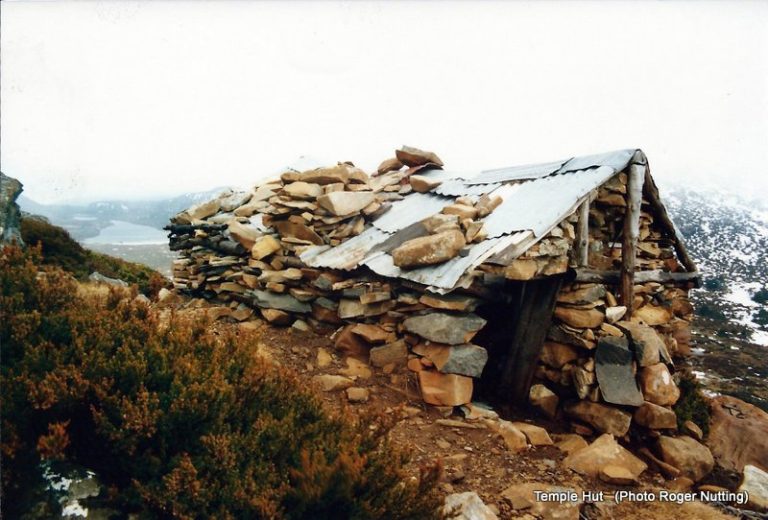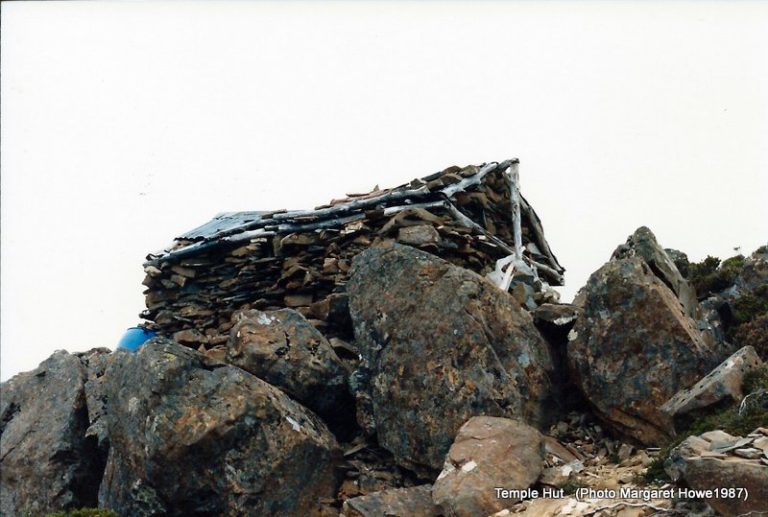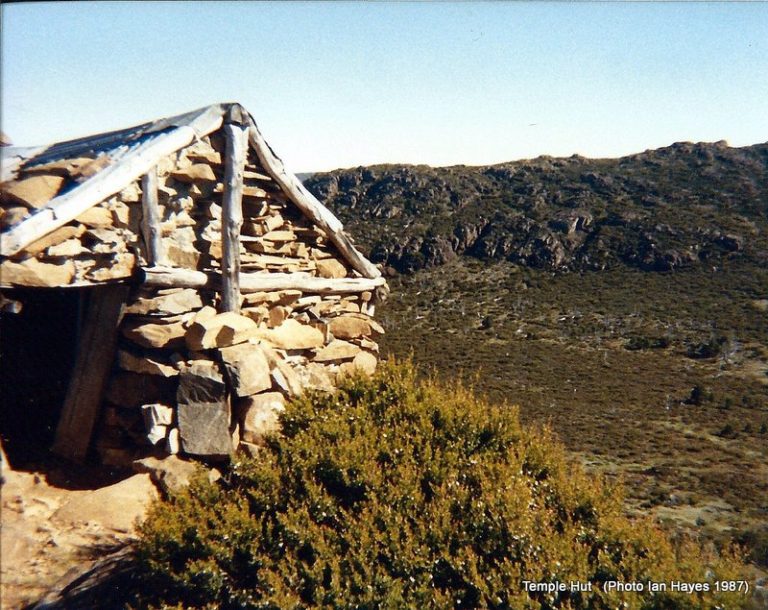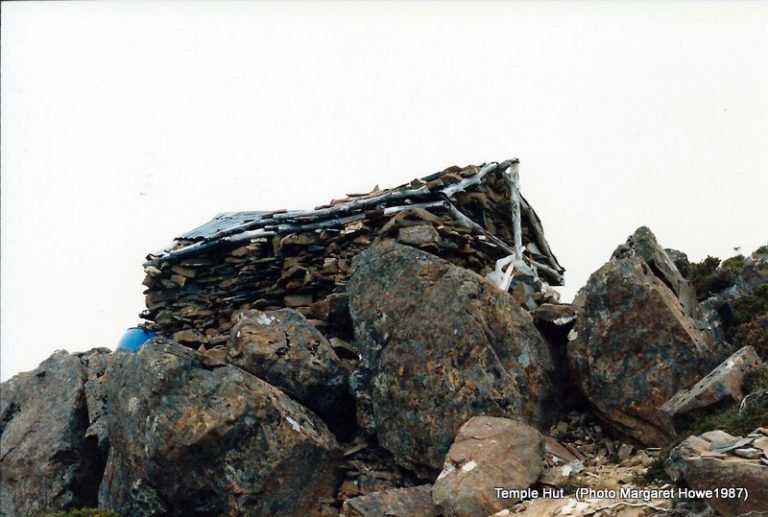Temple Hut
In the early 1970’s, a young man had a vision to build a shelter where he could be at one with nature. Roger Webb was that man – fit, energetic and in his mid-20’s with a romantic notion to build a basic hut. His place of choice was an area he loved deeply and in which he walked extensively. Roger searched for several days before deciding on his ideal location – The Temple – in the heart of the spectacular wilderness known as the Walls of Jerusalem. It would be another decade before the area was proclaimed a National Park. Roger was an Art teacher at Reece High School and also taught ceramics at Devonport TAFE. He drew inspiration for his creative flare from the beauty of the wild places he visited in Tasmania. He therefore deliberately wanted the hut site to be exposed to the elements where he could fully appreciate and experience, with uninterrupted views, the natural world – atmospheric effects, cloud formations, phases of the moon, sunsets and sunrises – and where he would never have to dig his way out after a dump of winter snow. Clinging to the side of The Temple (1446 above sea level), in close proximity to the summit, seemed the perfect place. During the period of construction, Roger Webb and his long-time friends, Laurie Rickards, Bill Kinnear and Peter Sims, used a track from the Little Fisher River which at 3 hours one way was the quickest and most direct route to the hut site. Apart from the roof, the little hut was built entirely of stone sourced near the summit of The Temple. Rocks were also used to anchor the iron roof and secure it against the 140-150 km wind gusts which often lashed the mountain. A blue plastic 44 gallon (200 litre) drum was carried in by Roger and used for water catchment and storage.
The piecemeal construction spanned 2 years (1971-73) and involved approximately 30 trips by Roger and his mates, who carried everything in on their backs except the roofing iron and cement. These latter items were delivered by means of 2 airdrops via a small plane owned by Max Ellison, a farmer, councilor and passionate flyer. Max was intrigued by his friend’s idea to build a hut in such a remote area and happily agreed to assist with the transport of the largest and heaviest building materials. Two drops were made in the area known as Gate of the Chain, which lies between Zion Hill and The Temple. Following the second drop and on the plane’s homeward flight a glitch was noted by the pilot who reported that the engine appeared to have a slight malfunction. Fortunately it didn’t prevent the aircraft from making it safely back to Devonport.
Upon completion, the little stone hut was tiny and draughty and could sleep 3 at a pinch. Firewood needed to be collected and carried from the valley below and the chimney smoked badly – but it was never Roger’s intention for it to be suitable for broader public use and therefore any shortcomings were never a problem to him. It was his private shrine, built out of his passion for and respect of the wilderness that he loved so much.
Ironically, once building was complete, Roger only visited the hut on perhaps a dozen occasions in the ensuing years. While still living on the North West Coast during the late 70’s and early 80’s, Roger was actively involved with the successful campaign by the Wilderness Society to stop the Franklin Dam from being built. His career path then took him to the opposite end of Tasmania where he established himself as a prominently renowned ceramicist. His unique designs incorporating wonderful colours and glazes have resulted in many successful pottery exhibitions.
Today Temple Hut is in ruins. Reliable accounts have the hut still intact during the late 1980’s, possibly even the very early 90’s. And so it would seem the little stone structure may well have stood for almost 2 decades after it was built. It is unclear if the hut fell victim to the elements or whether it was physically and deliberately dismantled. It would be easy to understand how driving rain, howling winds and snow and ice over many years, interacting upon low quality cement work, would lead to its demise. Or was the hut deemed unsafe or in danger of collapse and intentionally pulled apart? Wooden poles and supports appear to have been neatly stacked and wedged in what remains of the partially disassembled stone walls. This would indicate human intervention.
The true fate of Temple Hut may never be known and, regrettably, it is another of Tasmania’s iconic mountain huts destined to be assigned to the history books.

